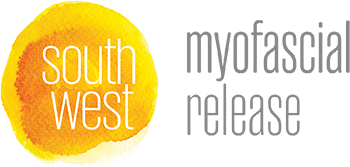When the sun’s out and the streets are buzzing, New Yorkers often lace up their shoes and hit the pavement. From scenic jogs through Central Park to riverside runs along the Hudson, summer is a beautiful time to stay active. But for many runners, the season also brings a familiar challenge: knee discomfort.
Whether you’re training for a 5K or simply running to clear your mind, knee tension can become a frustrating roadblock. The good news? With a few intentional changes—and the right kind of support—you can keep running without the ache. Myofascial release (MFR), a gentle and highly effective manual therapy, plays a key role in helping runners move better and feel stronger. In this blog, we’ll explore five summer strategies that combine movement wisdom with the benefits of MFR.
1. Start With a Myofascial-Friendly Warm-Up
A common cause of knee discomfort is tightness in the surrounding fascia—the web-like connective tissue that supports muscles and joints. When fascia becomes restricted, it can pull on the knees and reduce mobility. A light warm-up that includes dynamic stretching and soft tissue release can prepare your body for movement and ease tension before it starts.
Try this: Before running, use a soft foam roller or massage ball to gently roll the quads, calves, hamstrings, and IT band. Spend about 30 seconds on each area, breathing deeply and allowing the tissue to relax. Then, follow up with a few active stretches like leg swings or hip circles to awaken the joints and improve range of motion.
MFR isn’t just something done in a clinic—these simple techniques are rooted in the same principles, helping your body move more fluidly and with less strain on the knees.
2. Adjust Your Running Form (Even Slightly)
It doesn’t take a dramatic overhaul to improve your stride. In fact, many runners experience knee discomfort due to subtle misalignments, like a heavy heel strike or leaning too far forward. These issues can place extra pressure on the joints and surrounding tissues.
Small shifts, big results:
- Try shortening your stride slightly to reduce impact.
- Keep your chest lifted and shoulders relaxed.
- Aim for a soft, midfoot strike rather than a hard heel plant.
- Engage your core lightly to support better posture.
An expert in myofascial release can assess your movement patterns and identify hidden tension that might be affecting your stride. Sometimes, what feels like a “knee issue” is actually coming from tight hips or stiff ankles—something MFR is particularly effective at addressing.
3. Choose the Right Terrain and Footwear
Hot summer days can tempt you onto concrete sidewalks, but those unforgiving surfaces can amplify stress on the knees. The more impact your body absorbs, the more likely discomfort will creep in.
Consider your route:
- Opt for softer paths like grass, rubber tracks, or dirt trails when possible.
- Switch up your routine to include stairs, hills, or sand for variety and strength-building (in moderation).
And don’t forget footwear. Summer often means lighter shoes, but your knees still need stability. Look for running shoes that offer adequate support for your gait and replace them regularly—every 300 to 500 miles, depending on your running frequency.
Your MFR practitioner can also provide insight on how your body responds to different surfaces and suggest ways to reduce strain.
4. Prioritize Post-Run Recovery (Especially Fascia)
After a long run, you might be tempted to flop on the couch and call it a day. But taking 5 to 10 minutes to release tension can make a big difference in your long-term comfort.
Post-run myofascial recovery tips:
- Use a foam roller on major leg muscles to reduce tightness and promote circulation.
- Apply gentle pressure (not pain!) with your hands or tools on areas that feel restricted.
- Finish with some light stretching, focusing on the hips, calves, hamstrings, and inner thighs.
Think of this as maintenance for your fascia—keeping it pliable, hydrated, and resilient. At Southwest Myofascial Release, we often guide runners through personalized recovery routines that combine hands-on MFR with movement education.
5. Listen to Discomfort, Don’t Ignore It
Pain is your body’s way of asking for attention. Pushing through knee discomfort might seem noble in the moment, but it can set you up for longer-term issues. That’s why it’s important to recognize the difference between muscle soreness and joint strain.
Here’s what to watch for:
- Discomfort that lingers or worsens after running
- Sharp or stabbing pain during movement
- Swelling or stiffness that impacts your daily activities
Myofascial release offers a non-invasive way to explore and treat the underlying causes of these symptoms. By gently releasing restricted tissue, we help restore balance, reduce inflammation, and improve function—so your body can do what it loves without fighting itself.
Why Myofascial Release Makes a Difference for Runners
Runners place repetitive demand on their bodies, which can lead to fascial restrictions over time. Myofascial release addresses the root of discomfort by:
- Reducing tightness that pulls on the knee joint
- Enhancing range of motion in the hips, legs, and ankles
- Promoting better circulation for tissue recovery
- Supporting optimal posture and alignment
It’s a gentle, hands-on therapy that meets your body where it’s at—no cracking, forceful stretching, or aggressive adjustments. And when used alongside smart training habits, it can be a game-changer in how your knees feel and function.
Ready to Run With More Ease This Summer?
Whether you’re just starting out or training for your next race, our team at Southwest Myofascial Release is here to support your goals. Through personalized one-on-one sessions, we help runners:
- Identify the true source of their knee discomfort
- Improve movement patterns and flexibility
- Learn at-home techniques to support long-term results
If you’re ready to move smarter, feel stronger, and reduce discomfort naturally, we invite you to book a Free Discovery Visit. Let’s explore what’s possible for your body—so you can run this summer with more ease, confidence, and joy.

